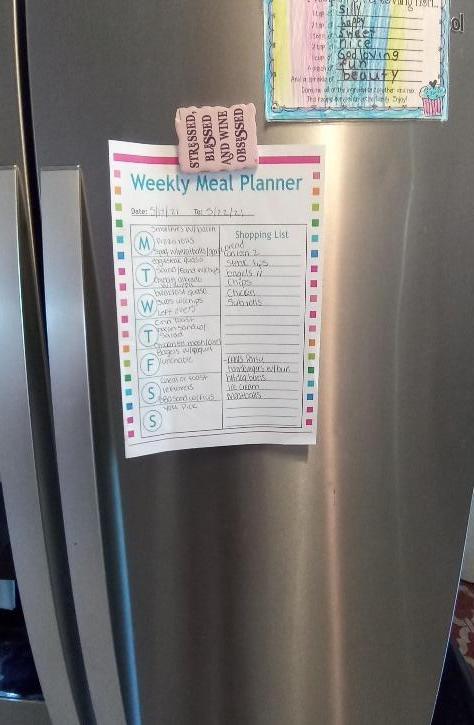I love this creative way to meal plan as a family and teach your kids valuable life skills along the way!
The following is a guest post by Courtney:
“What are we having for dinner?”
“There’s nothing in the house to eat.”
“I don’t want that.”
Are you tired of hearing these complaints from your children again and again?
As a mother to six, I get you! This was our family, too — until I solved that problem and taught my children a few valuable life lessons along the way.
How We Solved the “What’s for Dinner” Problem
As you can imagine, mealtime for a family of eight is a little demanding. It takes planning and sticking to a budget to make it work.
Our family’s grocery budget (not including toiletries and household items) is about $400 per month. Since we shop weekly, that means we have about $100 per week to work with. Keep in mind, everyone eats all meals at home (my husband and I both work from home and all the children are homeschooled.)
A few years ago, my husband came up with a rotating chore schedule for our kids that has worked out great. It’s a five-day system for the five older children (parents take over on the weekends!):
- kitchen
- living room
- bathroom
- sweep/trash
- laundry

How the “Kitchen” Chore Day Works
Here’s how the Kitchen Chore Day works and how this rotating schedule helps with menu planning:
- On “kitchen” day, the child is responsible for making breakfast, lunch, dinner, and cleaning up. (Other children get their own snacks as needed from the pantry and fridge.)
- On Thursdays, as a group, all the children look through the pantry, fridge, and freezer to see what we have on hand. They each discuss what they would like to cook and who’s using what ingredients (we don’t want two people claiming the chicken breast when there is only enough for one meal.)
- They then add their meals to the meal planning list on the fridge.
- After they get the shopping list together, they add everything to my Walmart grocery cart. We do the Walmart delivery in our area. It’s so worth it! I really love this app because the total adds up while you fill your cart. This is great for the kids because they can track how much money is being put into the cart and they know how much is left in the budget for that week. They try to stay around about $90/$95 so we can add items to our stockpile or maybe buy a few extra items to do some freezer cooking.

Lessons They’ve Learned Along The Way
This system has worked out really well for our family and our kids have learned many great lifelong lessons along the way…
1. How to meal plan.
Learning how to meal plan is a great advantage to have. I know quite a few parents and/or couples who wish they had learned about meal planning long before they were married.
They could have saved themselves a lot of money if they knew this valuable skill.
2. How to work with a budget and stay within that budget.
Finances are one of the most important topics you should teach your child while they are young.
Teaching your children to be good stewards of their money while they are younger and willing to learn will lead them down the right road to financial freedom when they are older.
3. How to cook.
Teaching my children to cook for themselves and/or others is such a rewarding feeling.
I wish I had parents who taught me how to cook before I left the nest. I wouldn’t have had to order so much take out and my husband and I wouldn’t have had so many rough dinners the first few years of our marriage!
4. How to feel independent.
Lastly, but most importantly, we are teaching our children independence!
Not only is this important as we give them wings to be on their own as adults, but it also makes them feel valued and appreciated for learning to be independent and do things on their own.
Have you ever tried any kind of system like this? Do your kids make meals in your home? I’d love to hear!
Courtney is a veteran’s wife and mother to six very energetic children aging 4-14. She loves homeschooling, gardening, and saving money.
Want to cut your grocery budget? Go here and sign up (it’s free!) I’ll send you my 10 Easy Ways to Cut Your Grocery Bill By $50.



